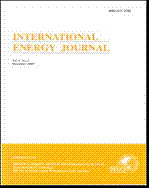ThaiScience
ThaiScience
INTERNATIONAL ENERGY JOURNAL
Volume 22, No. 04, Month DECEMBER, Year 2022, Pages 315 - 326
Economic operation strategy of multitype emergency power supply taking into account carbon cost
Tingyan Wang, Qingdan Huang, Chongzhi Zhao, Huihong Huang, Haoyong Song
Abstract Download PDF
Emergency power is the core power equipment to guarantee power in communication, emergency repair and medical. However, such factors as pollution and energy storage capacity restrict the development of emergency power toward a clean and low-carbon new power system. Aiming at the emergency power system of diesel generator, LiFePO4 battery and fuel cell that using hydrogen and methanol as fuel, taking the levelized cost of energy (LCOE) of the system as the index. The economic operation strategy of the emergency power supply was put forward, and the sensitivity analysis of key parameters and the feasibility analysis were studied. The results show that short and small-scale (0-4h, 1kW) power backup using LiFePO4 battery is better at present. Medium and long (5-80h) power backup using diesel generator and long (≥80h) power backup using solid oxide fuel cell (SOFC) methanol are more economical. In future, LiFePO4 battery will become the optimal economic solution for short-term, small-scale and high-frequency power backup. SOFC hydrogen, proton-exchange membrane fuel cell (PEMFC) hydrogen and SOFC methanol will become the optimal low-carbon economic solution for longterm continuous power backup, and it is feasible to use fuel cell as emergency power.
Keywords
Carbon costs, Economic operation strategy, Emergency power, Feasibility analysis, Fuel cellINTERNATIONAL ENERGY JOURNAL
Published by : Asian Institute of Technology
Contributions welcome at : http://www.rericjournal.ait.ac.th
